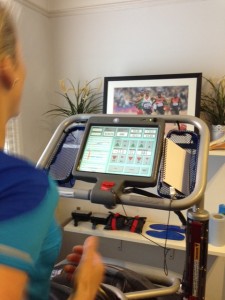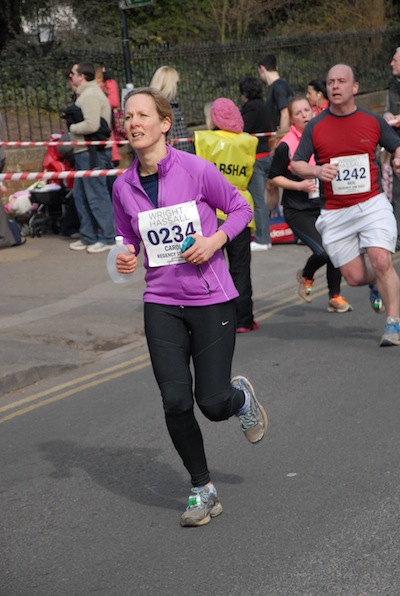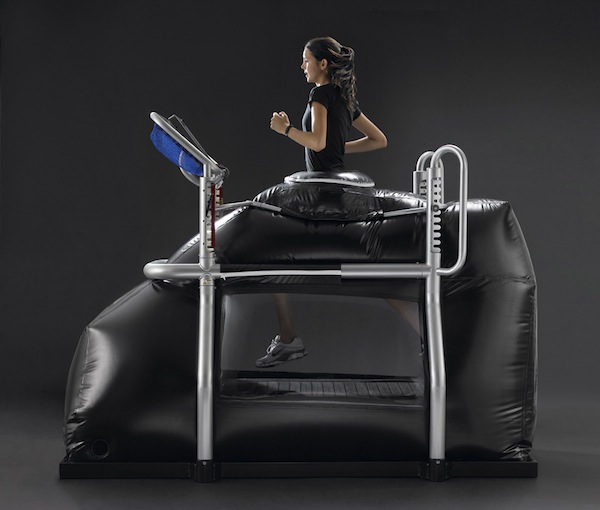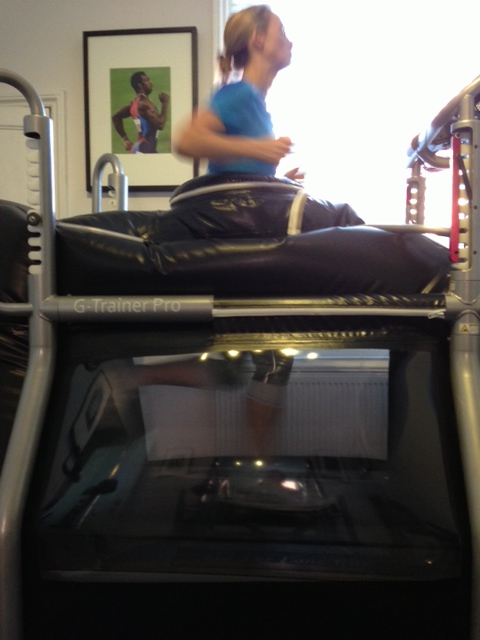
I really like running and have a handful of 10ks and a half marathon to my name. But I sporadically suffer from sore knees, so much so that I’ve had to pull out of running occasionally over the years.
I’m also suspicious that my style isn’t up to much after another jogger approached me one evening last year. As the sun was setting on an isolated canal towpath not far from my home, he caught up with me to tell me that one of my feet rotated inwards.
I was mortified – but equally petrified that he was some kind of weirdo. After all, who breaks into conversation with someone on a run? So I muttered, ‘Thank you’ and scarpered in a different direction as fast as I could.
But his words have been niggling at me, even more so since being swept up by friends’ enthusiasm into entering my local half marathon in Ealing. I’ve been training hard for months: I set my alarm an hour early twice a week to squeeze in a five mile run before work, and every weekend, I skip my precious lie-in to tackle a long run without derailing family life.
But my occasional knee twinges are becoming more frequent, and I’ve started worrying that my body will crack before I cross the starting line.
Scott Mitchell at specialist running clinic Move Running said he would help. A physiotherapist and running coach, Scott claims he can keep people running while treating injuries and improving technique.
He booked me on to his anti-gravity treadmill to check my running style.
The anti-gravity treadmill was first designed by NASA as a way of exercising their astronauts in space.
If you are recovering from injury, you can programme it to support up to 80 per cent of your body weight. So even if you’re normally in pain when walking, you can exercise pain-free. This allows you to maintain or build fitness, while resting your injury and shortening recovery time.
It’s useful for athletes too – Paula Radcliffe has one at home, I learn – offering a safe way to increase your mileage or build speed.
The Alter-G anti-gravity treadmill, tucked into a room of Scott’s clinic in Chiswick, west London, looks like a normal treadmill in many ways – apart from the unusual black rubber skirting at your waist.
I climb into some wetsuit shorts. These are connected to a contraption that looks like the spray deck of a canoe. On the treadmill, Scott zips the spray deck into the rubber skirting at my waist, preventing air from escaping.
Then he switches on the machine. As the air starts to blow in, it bubbles at me, feeling as though someone is blowing raspberries on my tummy. I gently lift upwards, rather like floating on a hot air balloon, although my feet stay in contact with the treadmill.
Scott sets the machine to work at the normal training load of 75 per cent – so 25 per cent of my body weight is supported.

After a while, Scott switches the load on the machine back to full gravity. It’s a weird sensation – I’m suddenly extraordinarily heavy. From having bounced along gaily, I’m now pounding the treadmill with all the noise and force of an elephant.
Click here to see Carole running on the gravity treadmill
Meanwhile, Scott has videoed and assessed the way I run. It’s not good news – and vindicates that jogger on the towpath. There are four problems:
- Heel striking. Good technique is to strike the ground with the middle of your foot, but I don’t do this. “I think heel striking is your biggest issue,” says Scott. “It introduces a lot of force which you then have to deal with.”
- My left foot rotates inward. Scott thinks this movement is coming from my hip. I ask him if it’s something to do with having had three children, but he thinks not.
- My right foot rotates outwards. Click here for a video of Carole’s feet pronating outwards
- Shuffling. “Shufflers don’t pick their heels up,” says Scott. Apparently, my heels should be almost touching my bottom, but my legs only make the right angle.
When Scott shows me the video of my running, I’m mortified. How can I have pounded the streets oblivious to my feet doing all those strange things?
He sets me my first running homework: to pick up my heels up at the end of my stride as high as possible. I told him this feels unnatural. “It’s like a grassy field,” he promises. “The more times you walk that path, the more you know it.”
The morning after, it was my long run, and with five weeks to go before the half, I wanted to tackle 13 miles.
Picking up my heels wasn’t easy: I could kick off nicely, although it felt very much like hard work.
But rather surprisingly, it helped me run up the hills on my route. I found that my usual ‘shuffle’ involved more steps and greater effort on an incline. By picking up my heels, I took the hills faster and with a smidge less pain. Not a bad first lesson.
Carole’s coach

Carole Beck, 40, is a freelance health and parenting writer and editor. She has three children – aged seven,five, and two – and she writes a blog about trying to lead a healthier family life at Healthier Mummy. Follow Carole at @healthiermummy.
Like this article? Sign up to our newsletter to get more articles like this delivered straight to your inbox.























































